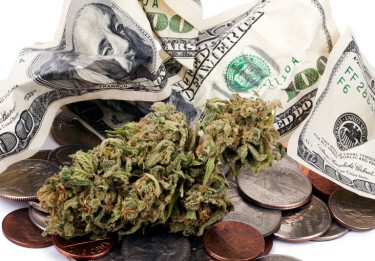
The story of cannabis in America is one of resilience, transformation, and growing acceptance. Once outlawed, associated only with the shadowy underworld of black markets, cannabis now stands in the legal light, progressively winning approval in the medical and recreational realms.
A Historical Perspective
Cannabis and hemp have been part of human civilization for thousands of years, utilized for textiles, medicine, and ritualistic practices. While hemp, due to its strong fiber, was primarily grown in early America for industrial purposes, its psychoactive cousin, marijuana, remained somewhat obscure to the wider public.
The Marijuana Tax Act of 1937 was not just an economic regulation but also a move propelled by a combination of racial and economic factors. Stories propagated during this era, many deeply rooted in racial prejudice, framed cannabis as a substance that induced violent behavior. These narratives, combined with economic competition from the hemp industry, played a role in cannabis's prohibition.
By the time the 1970 Controlled Substances Act came into play, cannabis was already deeply stigmatized. Its classification as a Schedule I substance placed it in the same category as drugs like heroin, indicating a substance with a high potential for abuse and no accepted medical use.
However, even in these prohibitive years, cannabis thrived in underground markets. Countercultural movements of the 60s and 70s embraced it, leading to its proliferation and, eventually, to states reconsidering its medical value by the century's close.
Cannabis Breaks Through Legal Barriers
1996 marked a significant turning point in American cannabis history. Proposition 215, also known as the Compassionate Use Act, was passed in California, permitting the medical use of marijuana for patients with specific illnesses. This was a direct challenge to federal law and set a precedent for states' rights on the matter.
Subsequent states' approval for medical use indicated a shift in public opinion. The advancements in cannabis research and the growing number of patient testimonials on its therapeutic benefits played a pivotal role in this transformation.
By the time Colorado and Washington fully legalized cannabis for recreational use in 2012, the American perspective had evolved dramatically. The subsequent states that decriminalized and legalized cannabis did not just witness a change in law but also saw a surge in economic growth. The cannabis industry has since given rise to dispensaries, culinary innovations, and even tourism, generating millions in tax revenue and creating numerous jobs.
The journey of cannabis from a stigmatized substance to an accepted and commercially viable product showcases the power of research, advocacy, and evolving societal views. It also serves as a lesson in how perceptions can change and how policies can adapt in response to both evidence and changing societal values.
From Black Market to Main Street
Once associated largely with the black market, cannabis now basks in the glow of mainstream acceptance. It was a process that required innovation, ingenuity, and patience. As legal boundaries were pushed and shattered, business models were developed and fine-tuned, and technology, particularly digital and crypto currencies, played a crucial role.
Bitcoin particularly emerged as a preferred mode of transaction among cannabis vendors. One of the reasons was the reluctance of traditional banks to associate with companies in the cannabis industry, due to the federal ban. A concept that might seem alien to traditional finance sectors - like Bitcoincasino.us for instance, where Bitcoin is the primary currency - has found favor in this once marginalized industry.
The use of Bitcoin points to the ingenuity of an industry that has faced numerous obstacles in its journey from the black market to the mainstream. Instead of depending on traditional financial systems, they turned to encrypted, decentralized technologies, which in many ways reflect the spirit of the cannabis industry.
The Booming Cannabis Industry and Its Challenges
The market size of legal marijuana in the USA was estimated at $13.6 billion in 2019, with about 340,000 jobs devoted to handling plants, according to New Frontier Data. The cannabis industry’s two major segments, recreational and medicinal, both have broad spectrums of products appealing to different sections of the population.
Advancements and Innovations
The legitimization and growth of the cannabis industry have spurred developments and advancements that were previously unthinkable. The full potential of cannabis and cannabinoids is being unlocked, with a range of innovative and niche products flooding the market.
Challenges to the Cannabis Industry
While the cannabis industry has made remarkable strides in terms of legalization and public acceptance, it still navigates a myriad of challenges that inhibit its full potential. The juxtaposition of state-level legalization with federal prohibition creates an intricate maze for cannabis entrepreneurs. Federal illegality, while being a contentious debate on its own, brings forth tangible operational challenges. A prominent one is the restricted access to conventional banking systems. This limitation not only hampers the industry's financial fluidity but also subjects businesses to unnecessary risks, as they're compelled to operate predominantly in cash.
Influence of Bitcoin in a Complicated Scenario
Due to these banking conundrums, the cannabis industry has had to innovate and adapt. Enter Bitcoin, a decentralized digital currency operating without the conventional banking system. By virtue of its design, Bitcoin bypasses many of the challenges posed by the dichotomy of state and federal laws on cannabis.
The parallels between Bitcoin and the cannabis industry are uncanny. Both emerged from the peripheries of their respective sectors, surrounded by skepticism and controversy. But over time, as understanding and acceptance grew, so did their influence and legitimacy.
While to the average person, the mechanics of Bitcoin, especially concepts like blockchain, might seem intricate and daunting (much like trying to decipher the odds on a Bitcoin gambling site like BitcoinCasino.us), the cannabis sector has keenly recognized and harnessed its potential. This synergy underscores the industry's resilience and adaptability.
Conclusion
The transformation of the cannabis industry from the fringes to the mainstream can be seen as a symbol of societal evolution. With the industry predicted to reach $73.6 billion by 2027, it is clear that the perception of cannabis is changing. As the industry continues to grow, innovate, and break boundaries, perhaps it can serve as an inspiration for other industries grappling with obstacles whether they be of perception, legality or innovation.
MORE ON THE BLACK MARKET TRANSITION, READ ON...
HOW MUCH DOES BLACK MARKET PRICES HURT MARGINS IN LEGAL WEED?






